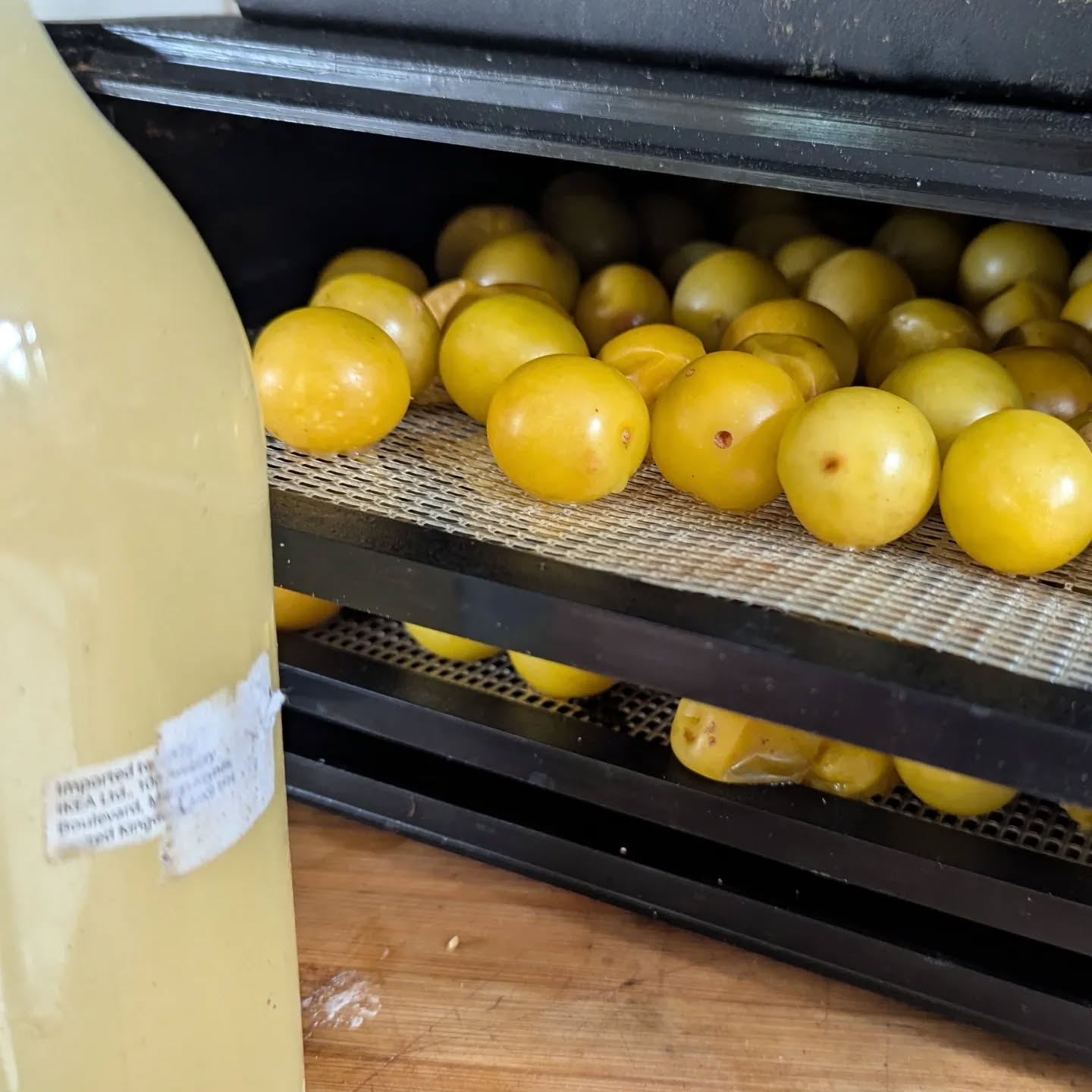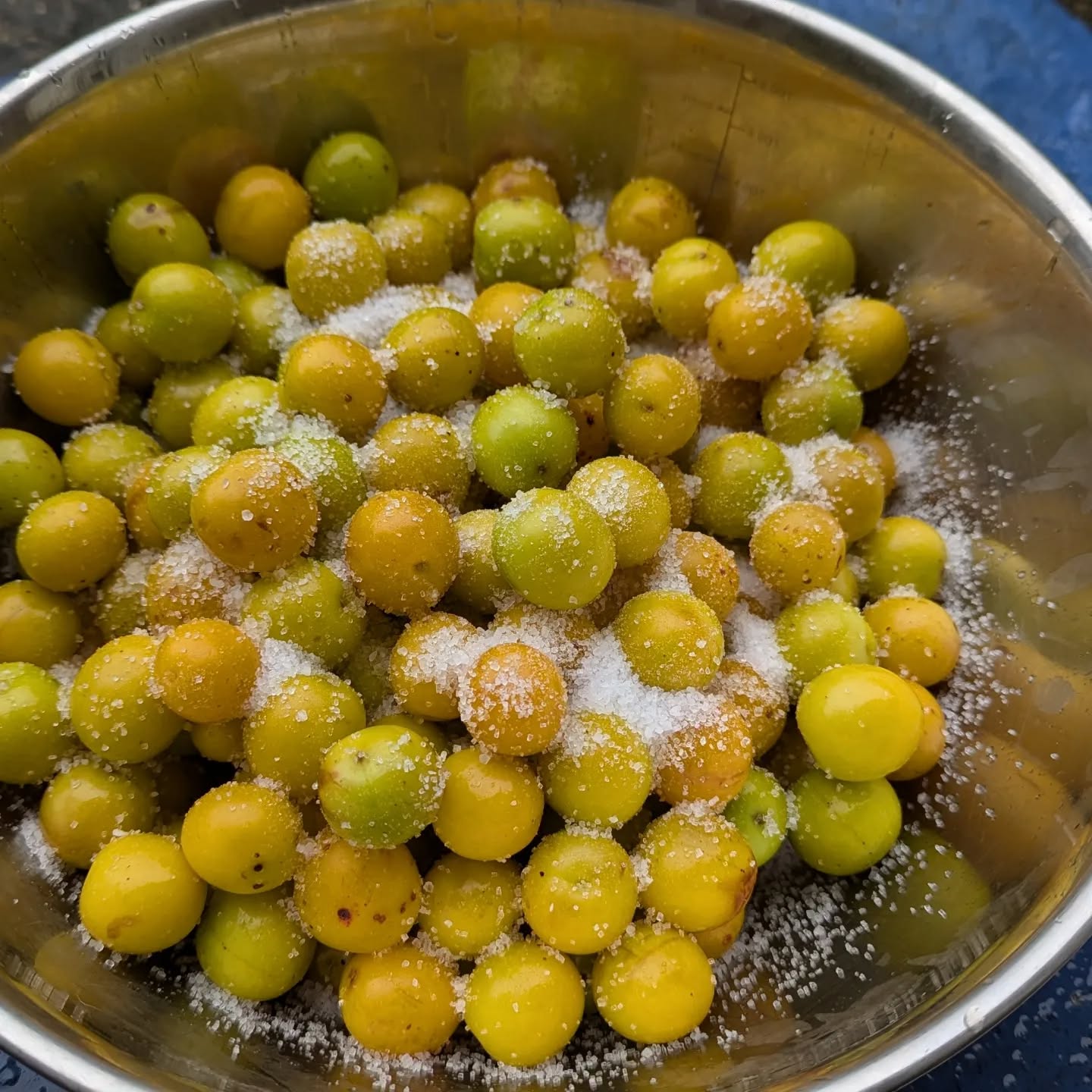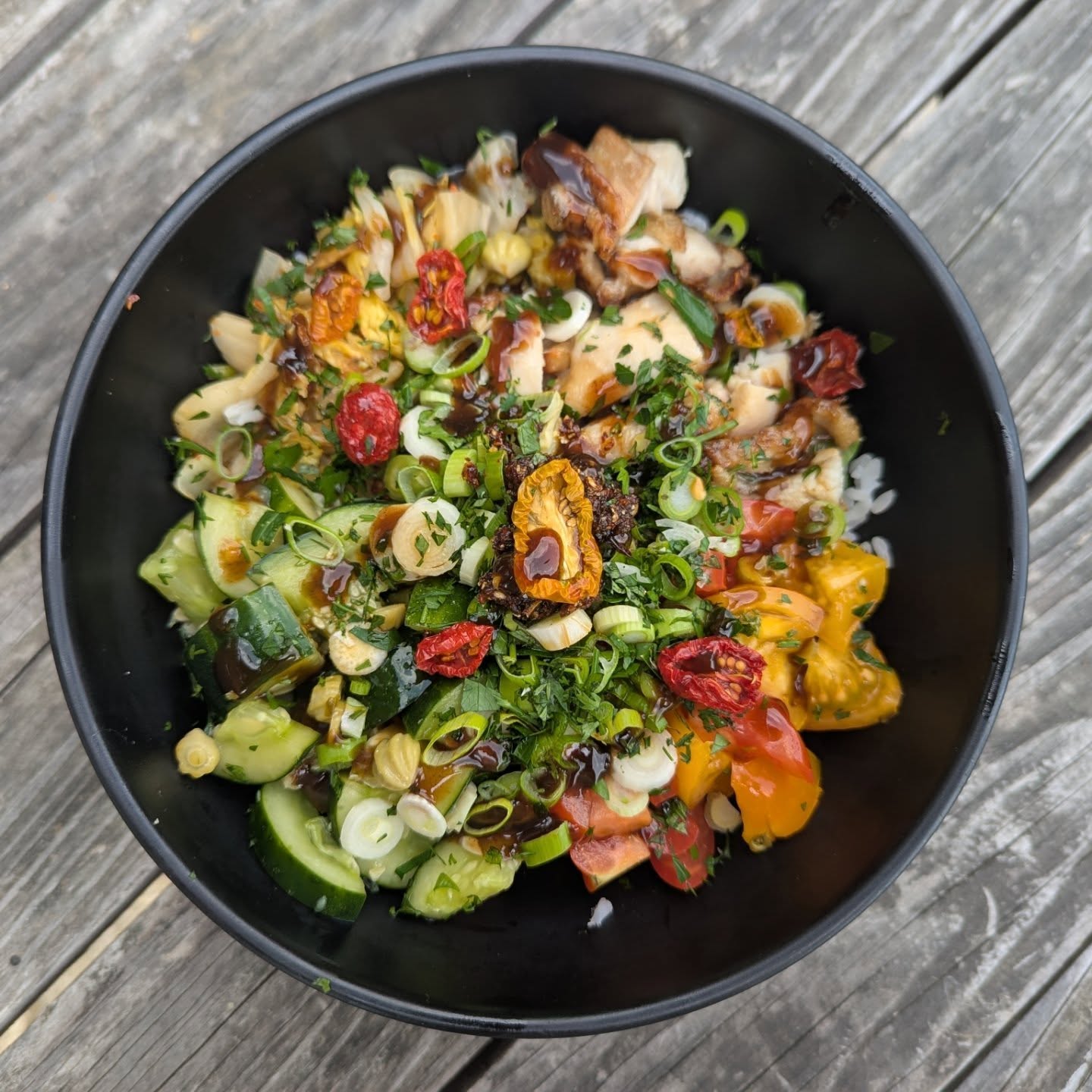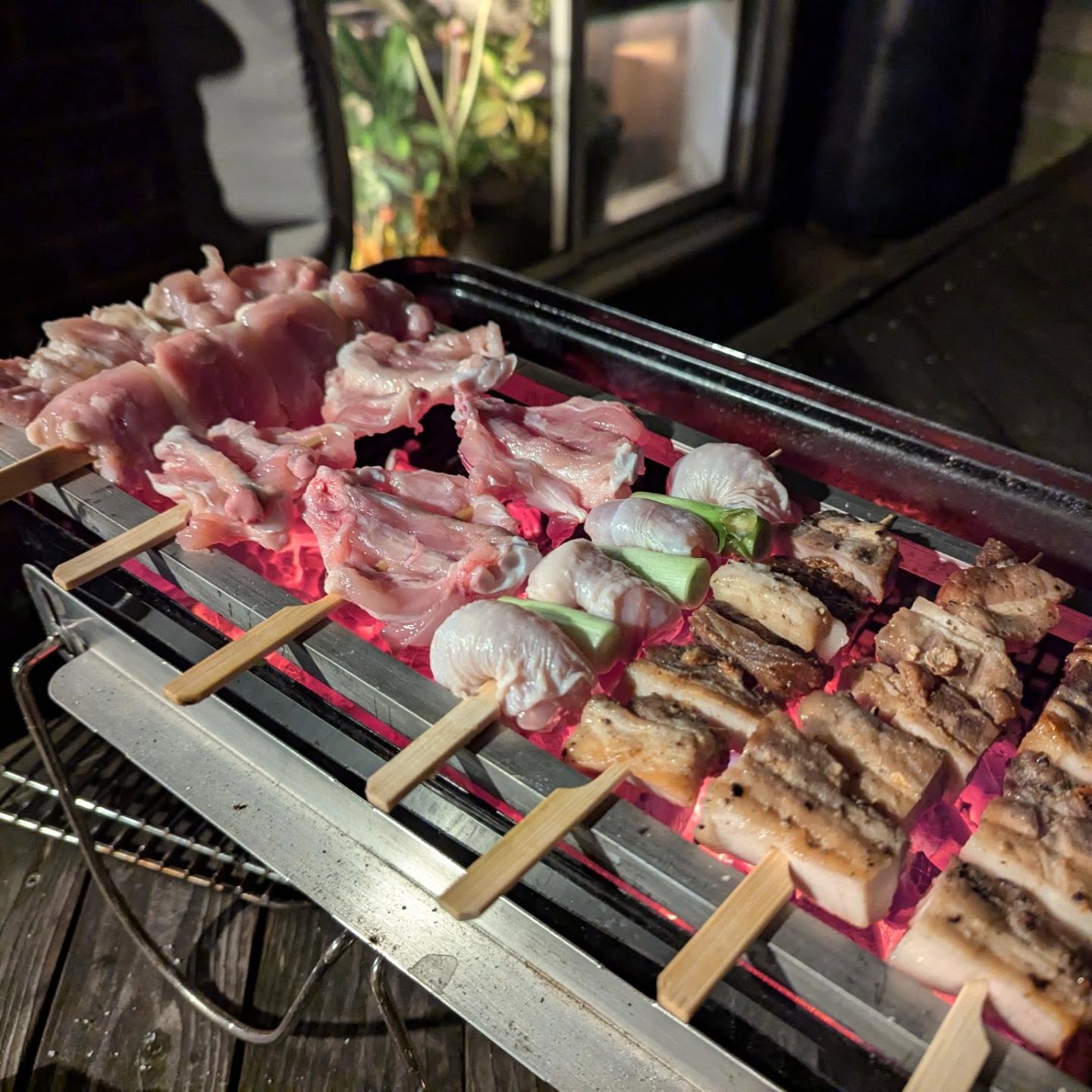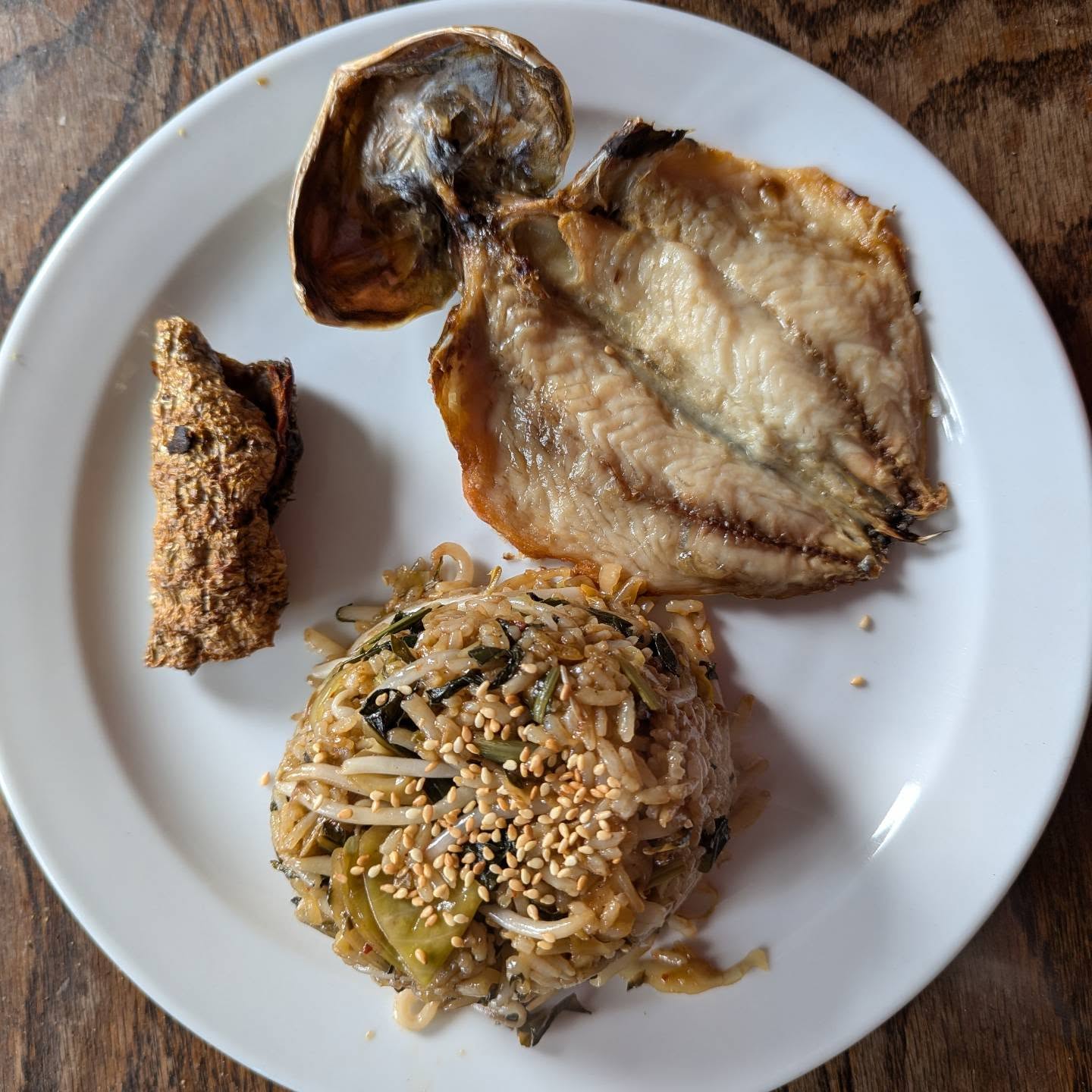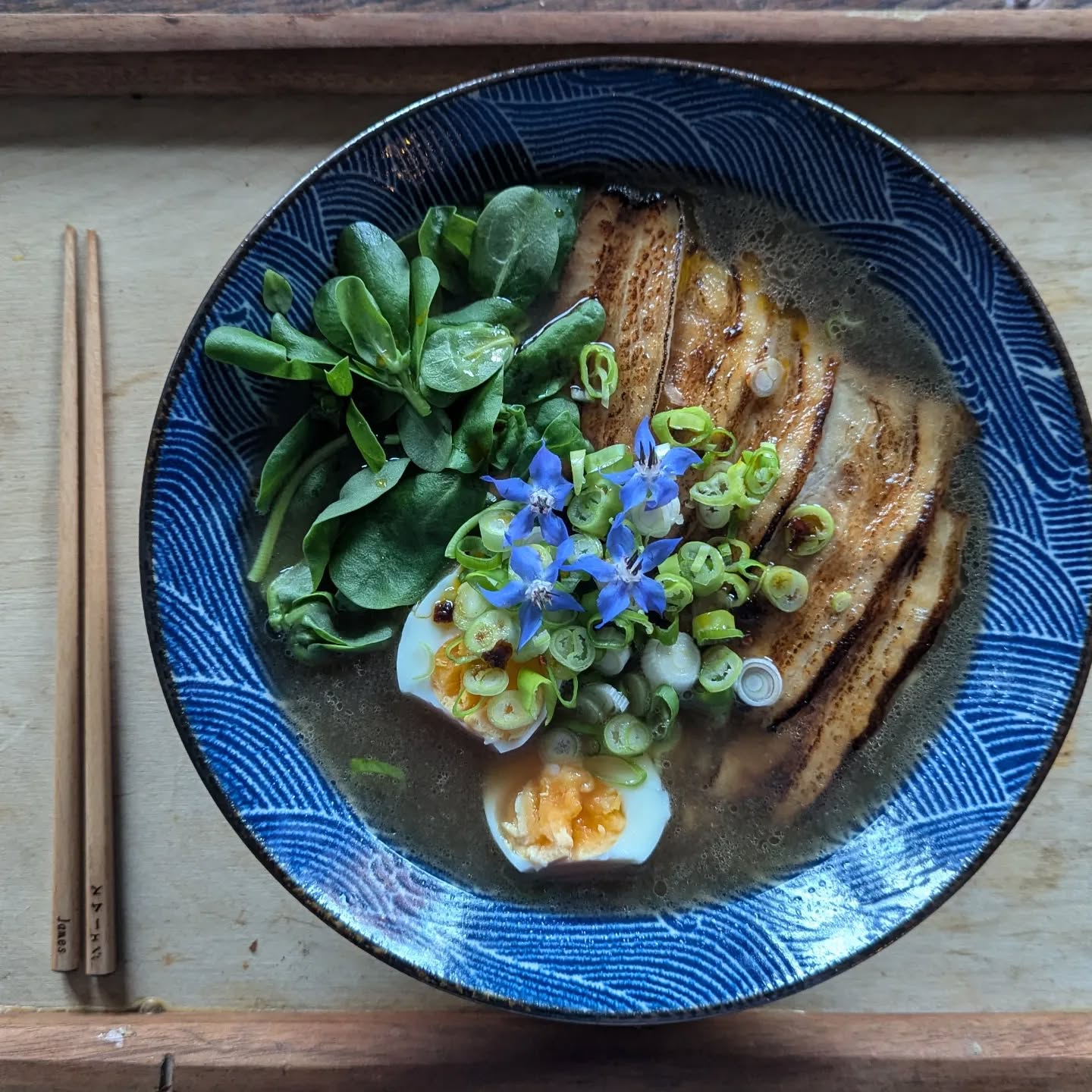· James Torr · Personal · 1 min read
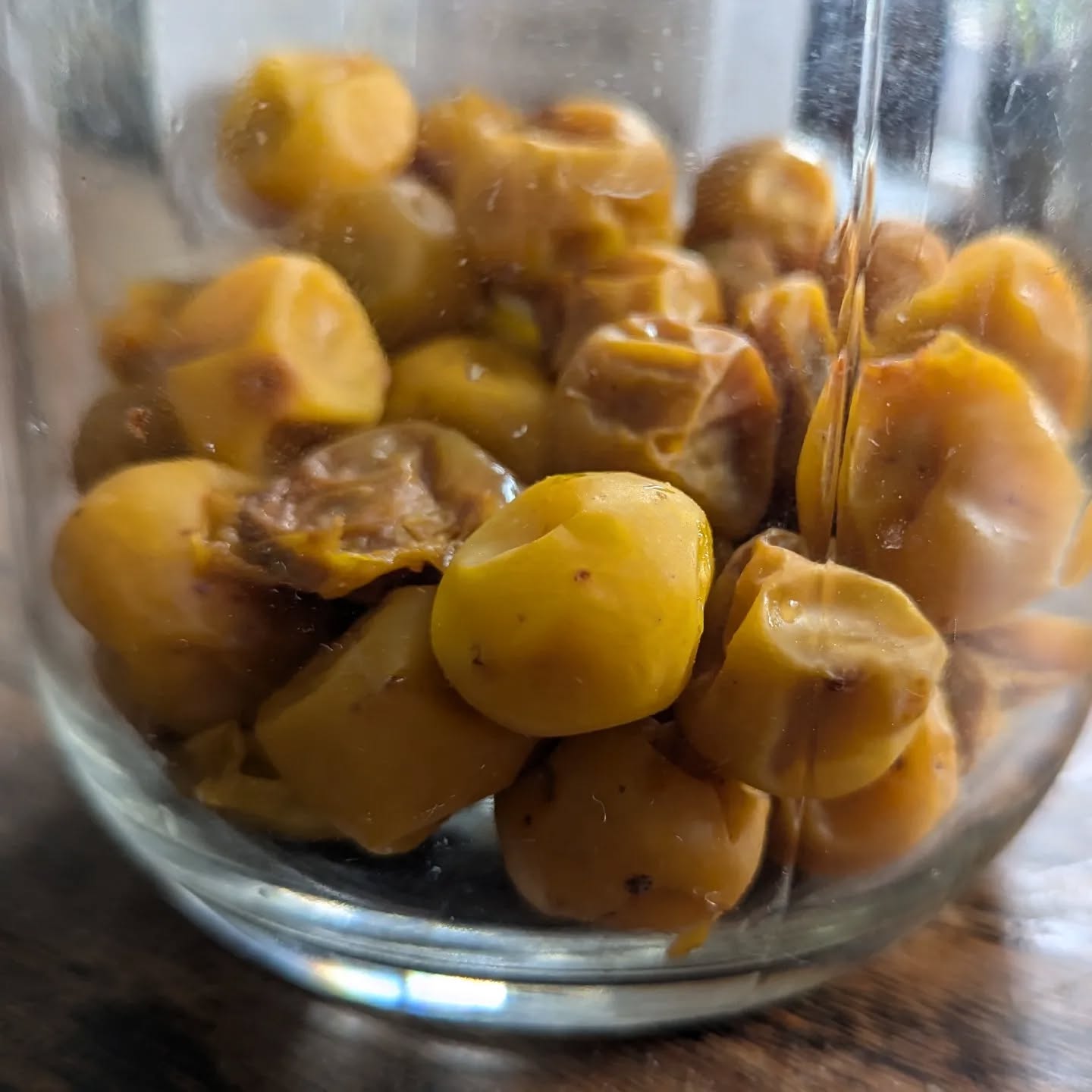
Umeboshi!
Umeboshi! Japanese fermented salty sour plum. These are a Mirabelle/cherry plum growing close to my house, local as it gets.
They’re used in dressings, cooked in a sardine stew, or eaten with rice in Japan. Super salty and a bit sour, best not eaten on their own. Commercial varieties are around 8% salt, I’m going a bit lower at 6%.
The process was quite simple really, add 6% salt and ferment whole for two weeks. Larger plums might require up to 3. After a day or two, I submerged the plums with the extracted juices with a weight.
Once fermented, strain the liquid off. This makes for a great marinade: mildly alcoholic, salty and sour. Dry for ~48hrs in a dehydrator. The plums should keep fine at room temp, but refrigerate if you’re concerned.

